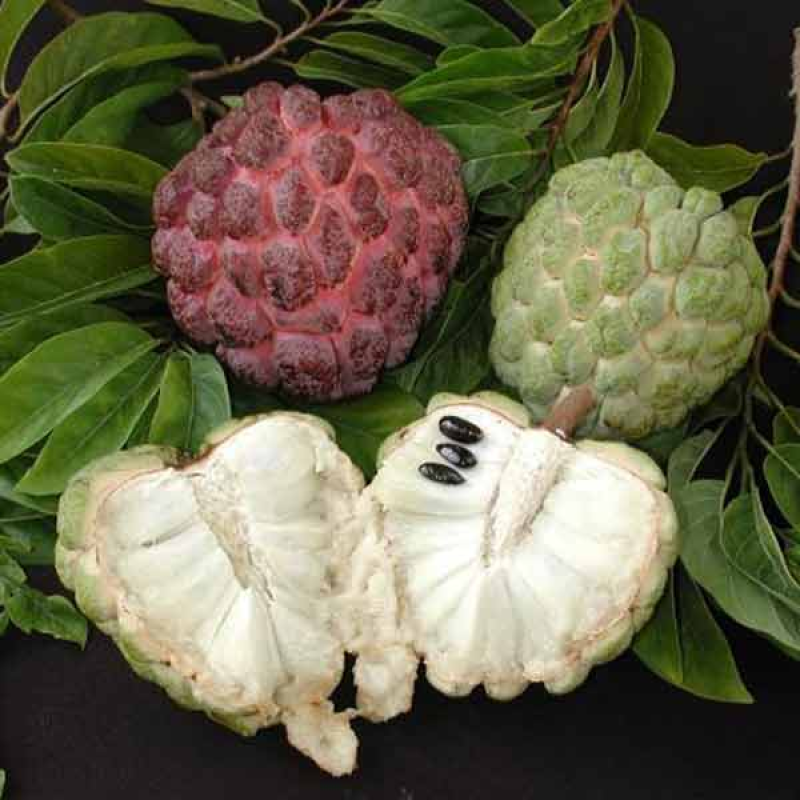
Pest management in custard apple
Share
Introduction
Custard apples, with their creamy texture and sweet flavor, are a delight to grow. However, ensuring a healthy yield requires vigilant pest management. From fruit borers to scale insects, custard apples face a range of pests that can jeopardize their growth and fruit quality. In this guide, we delve into effective strategies for identifying, preventing, and managing pests organically, ensuring your custard apple orchard thrives with minimal intervention. Let's explore how to protect your custard apples from pests and promote a robust, fruitful harvest.

Fruit borer: Heterographis bengalella
Symptoms of damage:
Caterpillar bore into the fruits and make tunnel inside.
Feed on the internal content of the fruits.
Affected fruits fall to ground Identification of pest
Black coloured caterpillar

Management
Collect and destroy the damaged fruits.
Spray endosulfan 0.07% or malathion 0.1% two times once at flower formation and second at fruit set
Fruit fly: Bactrocera zonata
Symptoms of damage
Maggot bore into the semi ripened fruits. Feed on the inside fruits.Affected fruits – shrivelled, malformed, rot and fall off
Identification of pest
Larva - Yellowish apodous maggots.
Adult - Light brown with transparent wing

Management
Collect fallen infested fruits and dispose them by dumping in a pit and covering with soil. Provide summer ploughing to expose the pupa.
Immersion of fruits in hot water (45 to 470 C) for 60 minutes to kill eggs and maggots.
Monitor the activity of flies with methyl eugenol sex lure traps.

Use bait spray combing any one of the insecticides and molasses or jaggery 10 g/l, fenthion 100EC 1ml/l, malathion 50EC 2 ml/l, dimethoate 30 EC 1 ml/l, carbaryl 50 WP 4 g/l.
Two rounds at 2 weeks interval before ripening of fruits.
Prepare bait with methyl eugenol 1% solution mixed with malathion 0.1%.
Take 10 ml of this mixture per trap and keep them in 25 different places in one hectare.
Spray malathion 50 EC at 0.1% or fenthion 100 EC at 1ml/lit Field release of natural enemies Opius compensates and Spalangia philippines
Tailed mealy bug: Ferrisa virgata
Symptoms of damage
Adults and crawlers – setting on leaves, young shoots and fruit (between segments).
Yellowing of leaves.
Reduction of fruit size and do not fetch premium price in the market
Identification of pest
Nymph: Yellowish to pale white.
Adult: Females apterous, long, slender covered with white waxy secretions

Management
Collect and destroy the mealy bug infested leaves, shoots and fruits. Spray dichlorvos 0.05%, two times at new flush and shoot formation and second at fruit set. Release Cryptolaemous montrouzieri beetles @ 10/tree.
Summary
Custard apple growers beware! Three destructive pests threaten your harvest: fruit borer, fruit fly, and tailed mealybug. Fruit borer caterpillars tunnel into fruits, while fruit fly maggots feast on the insides, causing affected fruits to shrivel and fall. Tailed mealybugs weaken trees by sucking sap from leaves and young shoots, reducing fruit size and marketability. To fight back, a multi-pronged approach is key. Destroy infested fruits, disrupt pest lifecycles with techniques like hot water dips and tillage, and deploy natural enemies like beetles. Insecticides can be used strategically, but always follow label instructions. Remember, a healthy ecosystem with a variety of beneficial insects can help keep these pests in check.
